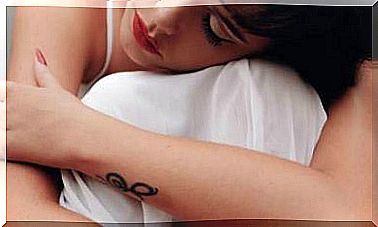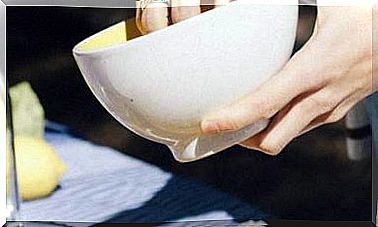11 Exercises To Improve Your Voice And Connect With It
Understanding sound: murmur, vibration and resonance
By emitting a voice sound we produce, at the same time, three main types of actions: breath, vibration and resonance.
And these actions correspond to three areas of the body that act simultaneously.
The blow
The voice requires placing air under pressure below the vocal cords. This corresponds to the respiratory (expiratory) part of our vocal instrument.
This murmur is produced, evidently, with the lungs, lodged in the ribs. But they do not act alone: they are associated with the entire abdomen and the muscles that surround it: the abdominals all around, the perineum muscles below and the famous diaphragm above.
This set constitutes a fundamental “department” in the voice: if it generates too much pressure, our voice will be exhausted very quickly. And if you do not produce enough, the voice will appear weak and will not be able to develop its timbre. It is, therefore, necessary that this “breath” produces just the right pressure at every moment – neither more nor less – so that the vocal emission is the desired one.
It is a process governed by everything that generates the murmur, but it can be largely influenced by other forces present in the body.
Vibration
Through vibration we transform said air into a pressure wave, which causes a first sound. This occurs between the vocal cords, in the area of the neck called the larynx. For this, a small place, the glottis, will open or close in relation to the air pressure.
These are very fast actions that change at full speed (often in a vocal sound there are several hundred vibrations per second). The tighter the pressure, the better the glottis can fine-tune its action.
It is important that, here, the vibration is as free as possible. As in the area of the murmur, this site can be influenced by forces in the body external to the glottis. That laryngeal sound is barely audible. It needs some transformations.
Resonance
The wave obtained then passes through resonance boxes that filter the preceding sound and enrich it. This occurs in the pharynx (behind the throat), mouth, and nose regions .
The vowel sound then exists in its complete form. The more precise and rich the sound coming from the larynx, depending on the precision of the pressure that sustains it, the better it can be deployed in the resonators. The resonance is governed by the pharyngeal / mouth / nose regions. And, as in the murmur and the vibration, other forces present in the body can influence it.
The voice, related to many parts of the body
It is often said that a singer’s instrument is “his own body.” This indicates that your vocal instrument is included in a larger ensemble.
And it is true that this instrument is constantly related to other parts of the body or, more exactly, to other functional parts: the locomotor body, the postural body and the respiratory body interact with the “vocal body”.
These four “bodies” often merge into each other. Let’s see them one by one.
The locomotor body
It is the body linked to movement, which we put into play to walk, go up and down stairs, dance, lift, push … It mixes, in part, with the respiratory and vocal bodies. Sometimes he is little involved in the vocal act. Or it can, on the contrary, become very involved and react to the actions of the respiratory and vocal bodies, or even provoke the action of these two.
In many classical choirs the singers sing almost motionless, while in gospel choirs it is common to let the body move to the rhythm of the song and even clap hands.
There is a frequent question : is it advisable to run, do yoga or Pilates to improve the voice? The answer is that good body coordination and regular exercise are often important for improving the voice.
The movement also activates the general circulation and that of the larynx, so it will be better hydrated.
The postural body
It is made up of the same parts as the locomotor body but we don’t use them in the same way. It corresponds to the moments when we are in an upright position, standing or sitting. It is not linked to large movements but to the vertical position.
It is the body of the person who speaks, who sings, who declaims or who shouts standing up: the teacher giving a class, the lawyer, the actor, the market seller who announces his merchandise, the choir singer or the choir director , etc.
In the voice, our postural body is influenced by the fact that an exhalation occurs and that it lengthens. This has different consequences: tendency to bend the knees, to flex the trunk, to project the neck and head forward or also the shoulders and arms.
The postural body can accompany these tendencies or, on the contrary, resist them: when singing a long phrase, we can follow the exhalation by letting the standing position round out a bit or, on the contrary, try to preserve the poise of the spine, which which will help the rib cage to stay open on the exhale so that it lasts longer.
The postural body can also drag the vocal body: if we let the back curve suddenly, the box will exhale and a certain vocal sound will emerge.
In certain vocal techniques, as in classical singing, this postural body must be ultra-precise. Why? Because the balance of the larynx depends on the position of the neck for the precision of the notes, or because the precision of the resonances depends on the balance of the pharynx.
In other contexts, for other types of sounds, it is necessary to completely release the posture, as in emotional sounds, some psychophysical therapies or certain actions in the theater.
The respiratory body
It is the part of the body linked to breathing : the lungs, the airways. But it is also everything that allows us to mobilize these viscera: the diaphragm, the abdominal cavity, the rib cage, the cervical spine, almost all the bones of the skull and, likewise, the muscles that act on these parts of the body.
Spontaneously, in the course of vocal action, this respiratory body moves during airflows : we open it naturally during inspiration (such as when we take in air before emitting voice) and close it during exhalation (when vocalizing ).
It is immobilized during suspensions: apneas, for example, when a chorus girl, ready to sing, awaits the entrance of the conductor.
And yet this respiratory body can act in the reverse direction of respiration. For example, it can move during apneas or open during exhalation. In these cases we transform either the respiratory gesture or the pressure games, and this will sometimes have an impact on the voice.
Our voice is therefore inseparable from our moving body. Perfecting the one will often perfect the other.









